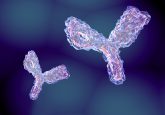Microneedle technology: the future of drug monitoring?

Researchers from the University of British Columbia (UBC; Vancouver, BC, Canada) and the Paul Scherrer Institut (PSI; Villigen, Switzerland) have developed a novel microneedle drug monitoring system. The system is capable of monitoring drug concentrations in the bloodstream without having to draw blood: the team hope that the device could one day replace blood tests, both reducing healthcare costs and improving patient comfort.
The microneedle system, discussed in an article in Scientific Reports, consists of a small, thin patch, which can be pressed against a patient’s arm to painlessly monitor drug concentration in their bloodstream during treatment. The microneedles resemble hollow cones and are less than half a millimeter in length – they are designed to puncture only the outer layer of skin, which acts as a protective barrier, but not the epidermis or dermis, which comprise nerves, blood vessels and active immune cells.
“Many groups are researching microneedle technology for painless vaccines and drug delivery,” commented researcher Sahan Ranamukhaarachchi, a PhD student at UBC, who created the microneedle device while on placement at PSI. “Using them to painlessly monitor drugs is a newer idea.”
Ranamukhaarachchi and colleagues developed the device to monitor vancomycin, an antibiotic administered intravenously. Due to the serious side effects that the drug can cause, patients must undergo three to four blood tests per day whilst being treated – the new microneedle system would alleviate the need for blood tests, drastically improving patient comfort and reducing costs.
The researchers were able to successfully monitor vancomycin concentrations in the bloodstream by sampling the fluid just below the outer layer of skin. The microneedle collects less than a millionth of a milliliter of this fluid, which then reacts inside the microneedle and produces a result that can be observed by researchers via an optical sensor. This technology permits researchers and clinicians to quickly determine blood drug concentration, allowing them to act quickly if it is too high or too low.
The technology is now being commercialized by Microdermics Inc. (Vancouver, BC, Canada), a UBC company. “The combination of knowhow from UBC and PSI, bringing together microneedles, microfluidics, optics and biotechnology, allowed us to create such a device capable of both collecting the fluid and performing the analysis in one device,” concluded Victor Cadarso, PSI.
Sources: Ranamukhaarachchi SA, Padeste C, Dubner M, Hafeli UO, Stoeber B, Cadarso VJ. Integrated hollow microneedle-optofluidic biosensor for therapeutic drug monitoring in sub-nanoliter volumes. Sci. Rep. doi:10.1038/srep29075 (2016) (Epub ahead of print); www.eurekalert.org/pub_releases/2016-07/uobc-sdp072216.php





